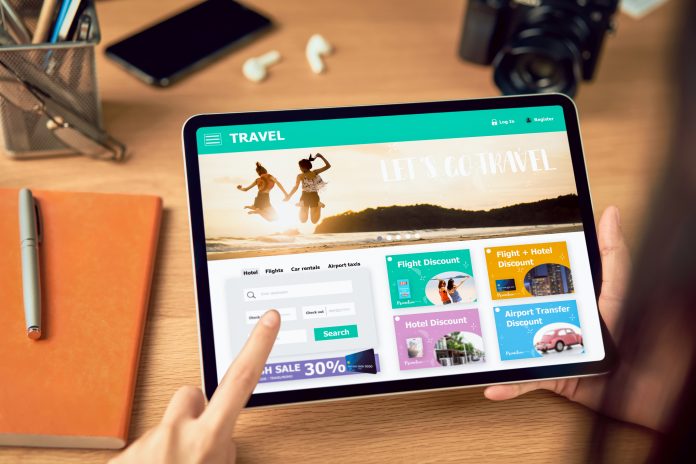Glenn Gillis, CEO of Sea Monster, discusses how augmented reality (AR) technology can be used for travel and tourism marketing post COVID-19
The COVID-19 pandemic outbreak has halted travel across the globe, with devastating financial consequences for travel organisations and the destinations they promote. However, augmented reality (AR) technology offers a solution, says Glenn Gillis of Sea Monster, a studio specialising in animation, augmented reality and gaming.
When the Pokémon Go app hit the world a few years ago, as an AR game downloaded onto smartphones that enabled virtual creatures to interact and “engage” with human players in real-world locations, it brought people outdoors, en masse, into public spaces – from parks to promenades and national monuments – to discover real places they’d never thought to venture into before.
And, while it may have been invented for a younger generation, it appealed equally to an adult audience. But what this app really gave us was a glimpse into the future, particularly for publicly funded destination marketing organisations (DMOs) as they prepare to conquer the new reality of a long term digitisation strategy now necessitated by a COVID-19 world.
This time, though, through the medium of AR, while the “players” are still real, the locations can be virtual, and smartphones and tablets become the new travel brochures.
Replacing traditional travel marketing and promotion
In a new state of play ̶ where travellers will be extremely cautious in terms of future bookings as well as which destinations to select ̶ the closer they can be brought to the real experience the more inclined, they will be to make a decision, as well as an actual booking, for when lockdowns and social distancing restrictions have levelled out into a new normal.
The future, therefore, lies in a very different world from the traditional, often cost-intensive, bricks-and-mortar visitor centres stocked with printed materials (with short shelf lives) into entirely online information and bookings facilities that have the ability to always stay current. At a time when government funding, post-COVID-19, will now be even more constrained, a “digital-first” approach will be the renewed value proposition that DMOs need to stay relevant.
Ramping up digital transformation in a post-pandemic world
However, ramping up these digital opportunities will require a significant mind-shift in the way DMOs plan and utilise their marketing budgets, as they evolve to become “digital-first” and move away from more traditional and increasingly less effective forms of marketing such as printed materials. Not least because these aren’t environmentally friendly anyway.
What DMOs will need to do, however, is ramp up their digital transformation across all available online marketing platforms as soon as possible, which means they will also need to be fully versed in how to effectively curate their offerings if they are to hold their own against other more generalised travel marketing sites such as TripAdvisor.
The medium of AR can be a powerful tool in this regard, because of the relationship it can co-create between a place and its visitors in building a destination’s brand. Its technology enables a highly engaging space in which to link a place very intimately with a person, and it even has the ability to hone in on a potential visitor’s preferences in order to have an experience tailormade.
Virtual reality is already here
Ironically, with the fourth digitally-driven industrial revolution has become an integral part of our lives for a number of years now, destination marketing was already turning in this direction and would have been the future, irrespective of the COVID-19 pandemic.
A report on Virtual Reality in Travel & Tourism published by ResearchAndMarkets.com in October 2019, before any notion of COVID-19 existed, outlined the huge impact that AR was already having and was further set to have on the global travel and tourism industry within the next few years. Among other impacts noted in the report was how virtual tourism stimulated travellers who had experienced a simulated environment into paying clients who wished to experience it for themselves. Whilst VR does hold promises it still requires specialised headsets, and the technology isn’t yet as mature as many imagine. AR, on the other hand, is accessible on almost any smart device, and is an extremely stable technology, with our imaginations really being the limiting factor. It also doesn’t need to be massively expensive, once you’ve done the full business case, and certainly when you stop doing things that no longer work.
The “try before you buy” that translates into bookings
In essence, augmented reality tours afford the market a “try before you buy” opportunity. Already revolutionizing what many DMOs do, as well as the way they do it, they also present significant revenue opportunities.
For example, AR can be enabled for a DMO so that venues within that DMO’s location can sell tickets online and in real-time, offer discounts in terms of future visits, or even enable the DMO to incorporate promotional add-ons like location quizzes or games that further enhance the visitor’s experience towards making an actual booking. And, as mentioned before, pick up on their visitor preferences to deliver a very personalised and trustworthy package. A powerful tool in a post-pandemic travellers’ market.











